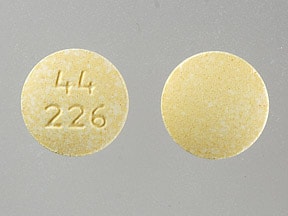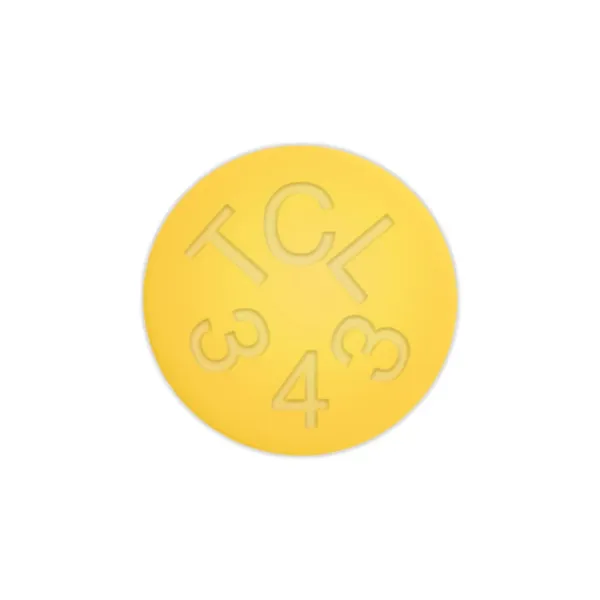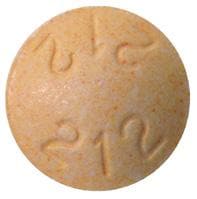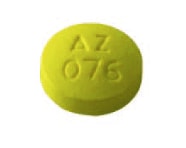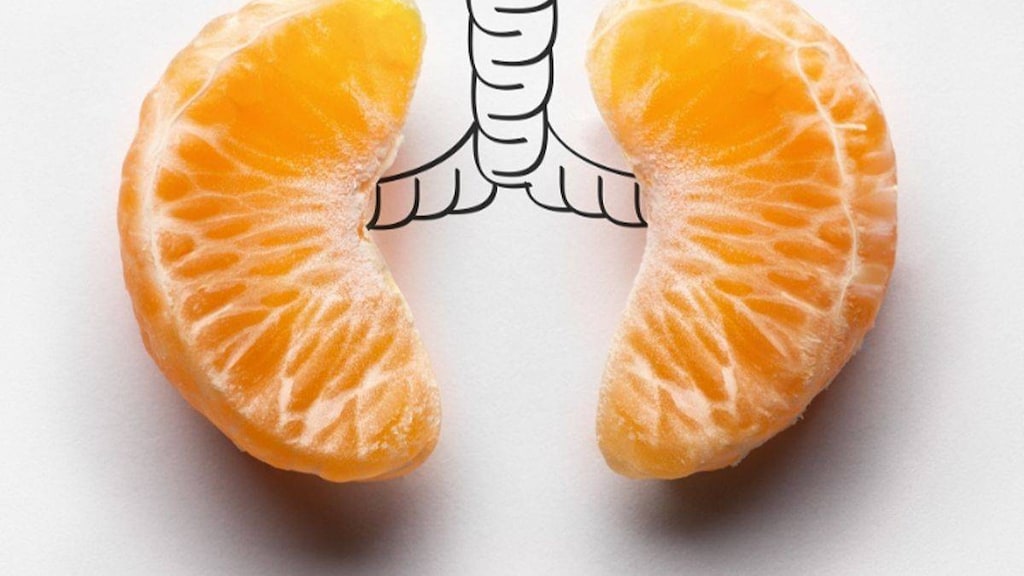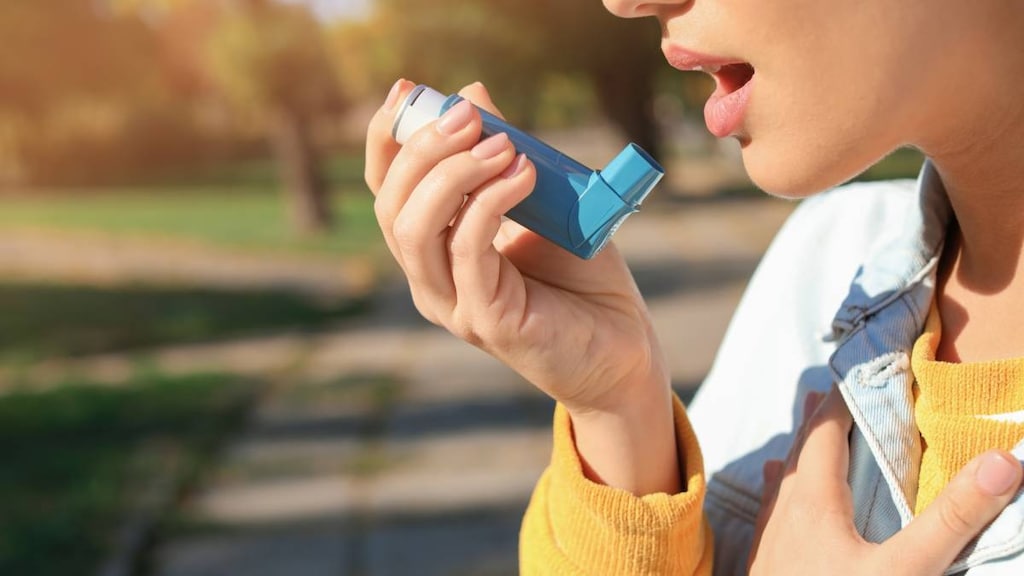Dosage Forms
Excipient information presented when available (limited, particularly for generics); consult specific product labeling. [DSC] = Discontinued product
Injection, solution, as citrate [preservative free]:
Cafcit: 60 mg/3 mL (3 mL) [equivalent to 10 mg/mL caffeine base]
Generic: 60 mg/3 mL (3 mL) [equivalent to 10 mg/mL caffeine base]
Injection, solution [with sodium benzoate]:
Generic: Caffeine 125 mg/mL and sodium benzoate 125 mg/mL (2 mL)
Solution, oral, as citrate [preservative free]:
Cafcit: 60 mg/3 mL (3 mL) [equivalent to 10 mg/mL caffeine base] [DSC]
Generic: 60 mg/3 mL (3 mL) [equivalent to 10 mg/mL caffeine base]
Tablet, oral:
Keep Alert: 200 mg
NoDoz Maximum Strength: 200 mg [DSC]
Stay Awake: 200 mg
Stay Awake Maximum Strength: 200 mg
Vivarin: 200 mg
Generic: 200 mg
Pharmacology
Mechanism of Action
Increases levels of 3'5' cyclic AMP by inhibiting phosphodiesterase; CNS stimulant which increases medullary respiratory center sensitivity to carbon dioxide, stimulates central inspiratory drive, and improves skeletal muscle contraction (diaphragmatic contractility); prevention of apnea may occur by competitive inhibition of adenosine
Pharmacokinetics/Pharmacodynamics
Distribution
Vd: Neonates: 0.8 to 0.9 L/kg; Children >9 months to Adults: 0.6 L/kg
Metabolism
Hepatic, via demethylation by CYP1A2. Note: In neonates, interconversion between caffeine and theophylline has been reported (caffeine levels are ~25% of measured theophylline after theophylline administration and ~3% to 8% of caffeine would be expected to be converted to theophylline)
Excretion
Neonates ≤1 month: 86% excreted unchanged in urine
Infants >1 month and Adults: In urine, as metabolites
Clearance:
Neonates: 8.9 mL/hour/kg (range: 2.5 to 17)
Adults: 94 mL/hour/kg
Time to Peak
Serum: Oral: Within 30 minutes to 2 hours
Half-Life Elimination
Neonates: 72 to 96 hours (range: 40 to 230 hours)
Children >9 months and Adults: 5 hours
Protein Binding
17% (children) to 36% (adults)
Use in Specific Populations
Special Populations Note
Pregnancy and cirrhosis: Half-life is increased.
Use: Labeled Indications
Caffeine citrate: Treatment of idiopathic apnea of prematurity
Caffeine and sodium benzoate: See Off-Label uses.
Caffeine [OTC labeling]: Restore mental alertness or wakefulness when experiencing fatigue
Use: Off Label
Augmentation of seizure induction during electroconvulsive therapy (caffeine and sodium benzoate)c
Data from a randomized, double blind study as well as a few unblinded studies support the use of caffeine/sodium benzoate in the treatment of augmentation of seizure induction during electroconvulsive therapy (ECT) Coffey 1987, Hinkle 1987, McCall 1993, Shapira 1987. Additional trials may be necessary to further define the role of caffeine/sodium benzoate in this setting.
Postdural puncture headache (caffeine and sodium benzoate)b
Data from a randomized, double blind, placebo-controlled study (Note: Second phase of study was unblinded and open-label) supports the use of IV caffeine/sodium benzoate in the treatment of postdural puncture headache Sechzer 1978. One protocol for the treatment of this condition has been described Jarvis 1986. Data from a double-blind, placebo-controlled trial in post-partum patients with postdural puncture headache supports the use of oral caffeine base for the treatment of this condition Camann 1990. Additional trials may be necessary to further define the role of caffeine/sodium benzoate in this condition.
Reversal of dipyridamole- or regadenoson-induced adverse reactions (eg, angina, hypotension) during nuclear cardiac stress testing (alternative agent)c
For dipyridamole- or regadenoson-induced adverse reactions (eg, angina, hypotension) during nuclear cardiac stress testing, when aminophylline is not available (eg, due to shortage), intravenous caffeine citrate may be used as an alternative Doran 2017, Singleton 2018. Use of caffeine with adenosine-induced adverse reactions specifically is usually not warranted due to adenosine's short half-life (adverse reactions will usually stop within seconds of stopping adenosine) ASNC [Henzlova 2016].
Contraindications
Hypersensitivity to caffeine or any component of the formulation; sodium benzoate is not for use in neonates
Dosage and Administration
Dosing: Adult
Note: Caffeine citrate should not be interchanged with the caffeine sodium benzoate formulation. Dosing presented as the combination of caffeine and sodium benzoate unless otherwise noted (caffeine base amount is 50% of the caffeine and sodium benzoate combination).
Augmentation of seizure induction during electroconvulsive therapy (ECT) (off-label use): IV: Initial: 500 to 1,000 mg caffeine and sodium benzoate (equivalent to 250 to 500 mg caffeine base); if necessary during subsequent ECT sessions, may titrate dose up or down in increments of 250 to 500 mg caffeine and sodium benzoate (equivalent to 125 to 250 mg caffeine base); a maximum dose of 2,000 mg caffeine and sodium benzoate (equivalent to 1,000 mg caffeine base) during an ECT session has been reported (Coffey 1987; Hinkle 1987; McCall 1993; Shapira 1987).
Postdural puncture headache (off-label use):
IV: 500 mg caffeine and sodium benzoate (equivalent to 250 mg caffeine base) in 1,000 mL NS infused over 1 hour, followed by 1,000 mL NS infused over 2 hours; after 4 hours, a second course of caffeine can be given for unrelieved headache pain (Choi 1996; Jarvis 1986; Yucel 1999).
Oral: 300 mg (caffeine base) as a single dose (Camann 1990)
Reversal of dipyridamole- or regadenoson-induced adverse reactions (eg, angina, hypotension) during nuclear cardiac stress testing (alternative agent) (off-label use): Caffeine citrate: IV: 60 mg (diluted in 25 mL of D5W) over 3 to 5 minutes (Doran 2017; Singleton 2018)
Stimulant: OTC labeling: Oral: 100 to 200 mg (caffeine base) every 3 to 4 hours as needed
Dosing: Geriatric
Refer to adult dosing.
Dosing: Pediatric
Note: Caffeine citrate should not be interchanged with the caffeine sodium benzoate formulation. Caffeine and sodium benzoate dosing presented as the combination (caffeine base amount is 50% of the caffeine and sodium benzoate combination).
Stimulant: OTC labeling: Caffeine (base): Children ≥12 years and Adolescents: Oral: 100 to 200 mg every 3 to 4 hours as needed
Reconstitution
Parenteral:
Caffeine and sodium benzoate: Note: Perform visual inspection of vial; do not use if particulates are present. Use a 5-micron filter needle to withdraw the required volume. Remove filter needle and replace with an appropriate needle before administration or if adding to an infusion solution (American Regent 2019).
For postdural puncture headaches (off-label use), dilute in 1,000 mL NS (Jarvis 1986; Yucel 1999).
Extemporaneously Prepared
A 10 mg/mL oral solution of caffeine (as citrate) may be prepared from 10 g citrated caffeine powder combined with 10 g citric acid USP and dissolved in 1000 mL distilled water. Label “shake well”. Stable for 3 months at room temperature (Nahata, 2014).
A 20 mg/mL oral solution of caffeine (as citrate) may be made from 10 g citrated caffeine powder and dissolved in 250 mL sterile water for irrigation. Stir solution until completely clear, then add a 2:1 mixture of simple syrup and cherry syrup in sufficient quantity to make 500 mL. Label “shake well” and “refrigerate”. Stable for 90 days (Eisenberg, 1984).
Eisenberg MG and Kang N, "Stability of Citrated Caffeine Solutions for Injectable and Enteral Use," Am J Hosp Pharm, 1984, 41(11):2405-6.6507449Nahata MC and Pai VB, Pediatric Drug Formulations, 6th ed, Cincinnati, OH: Harvey Whitney Books Co, 2014.
Administration
Oral: May be administered without regard to feedings or meals. May administer injectable formulation (caffeine citrate) orally.
Parenteral:
Caffeine citrate: Reversal of dipyridamole- or regadenoson-induced adverse reactions during cardiac stress testing: Infuse dose (diluted in 25 mL D5W) over 3 to 5 minutes (Doran 2017).
Caffeine and sodium benzoate: Note: Use a 0.22 micron in-line filter when administering (American Regent 2019).
Direct IV injection, administer slowly.
Postdural puncture headaches (off-label use): Infuse diluted solution over 1 hour. Follow with 1,000 mL NS infused over 2 hours (Choi 1996; Jarvis 1986; Yucel 1999).
Storage
Store at 20°C to 25°C (68°F to 77°F).
Caffeine citrate: Injection and oral solution contain no preservatives; injection is chemically stable for at least 24 hours at room temperature when diluted to 10 mg/mL (as caffeine citrate) with D5W, D50W, Intralipid® 20%, and Aminosyn® 8.5%; also compatible with dopamine (600 mcg/mL), calcium gluconate 10%, heparin (1 unit/mL), and fentanyl (10 mcg/mL) at room temperature for 24 hours.
Caffeine Images
Drug Interactions
Acebrophylline: May enhance the stimulatory effect of CNS Stimulants. Avoid combination
Adenosine: Caffeine and Caffeine Containing Products may diminish the therapeutic effect of Adenosine. Management: Monitor for decreased effect of adenosine if patient is receiving caffeine. Discontinue caffeine in advance of scheduled diagnostic use of adenosine whenever possible. Consider therapy modification
Amifampridine: Agents With Seizure Threshold Lowering Potential may enhance the neuroexcitatory and/or seizure-potentiating effect of Amifampridine. Monitor therapy
AtoMOXetine: May enhance the hypertensive effect of Sympathomimetics. AtoMOXetine may enhance the tachycardic effect of Sympathomimetics. Monitor therapy
Broccoli: May decrease the serum concentration of CYP1A2 Substrates (High risk with Inducers). Monitor therapy
Bromperidol: Caffeine and Caffeine Containing Products may decrease the absorption of Bromperidol. Monitor therapy
BuPROPion: May enhance the neuroexcitatory and/or seizure-potentiating effect of Agents With Seizure Threshold Lowering Potential. Monitor therapy
Cannabinoid-Containing Products: May enhance the tachycardic effect of Sympathomimetics. Exceptions: Cannabidiol. Monitor therapy
Cannabis: May decrease the serum concentration of CYP1A2 Substrates (High risk with Inducers). Monitor therapy
CloZAPine: CYP1A2 Inhibitors (Weak) may increase the serum concentration of CloZAPine. Management: Drugs listed as exceptions to this monograph are discussed in further detail in separate drug interaction monographs. Monitor therapy
Cocaine (Topical): May enhance the hypertensive effect of Sympathomimetics. Management: Consider alternatives to use of this combination when possible. Monitor closely for substantially increased blood pressure or heart rate and for any evidence of myocardial ischemia with concurrent use. Consider therapy modification
CYP1A2 Inducers (Moderate): May decrease the serum concentration of Caffeine and Caffeine Containing Products. Monitor therapy
CYP1A2 Inhibitors (Moderate): May increase the serum concentration of Caffeine and Caffeine Containing Products. Monitor therapy
CYP1A2 Inhibitors (Strong): May increase the serum concentration of Caffeine and Caffeine Containing Products. Monitor therapy
Doxofylline: Caffeine and Caffeine Containing Products may enhance the adverse/toxic effect of Doxofylline. Avoid combination
Esketamine: May enhance the hypertensive effect of CNS Stimulants. Monitor therapy
Formoterol: Caffeine and Caffeine Containing Products may enhance the adverse/toxic effect of Formoterol. Caffeine and Caffeine Containing Products may enhance the hypokalemic effect of Formoterol. Monitor therapy
Guanethidine: May enhance the arrhythmogenic effect of Sympathomimetics. Guanethidine may enhance the hypertensive effect of Sympathomimetics. Monitor therapy
Indacaterol: Caffeine and Caffeine Containing Products may enhance the adverse/toxic effect of Indacaterol. Caffeine and Caffeine Containing Products may enhance the hypokalemic effect of Indacaterol. Monitor therapy
Iohexol: Agents With Seizure Threshold Lowering Potential may enhance the adverse/toxic effect of Iohexol. Specifically, the risk for seizures may be increased. Management: Discontinue agents that may lower the seizure threshold 48 hours prior to intrathecal use of iohexol. Wait at least 24 hours after the procedure to resume such agents. In nonelective procedures, consider use of prophylactic anticonvulsants. Consider therapy modification
Iomeprol: Agents With Seizure Threshold Lowering Potential may enhance the adverse/toxic effect of Iomeprol. Specifically, the risk for seizures may be increased. Management: Discontinue agents that may lower the seizure threshold 48 hours prior to intrathecal use of iomeprol. Wait at least 24 hours after the procedure to resume such agents. In nonelective procedures, consider use of prophylactic anticonvulsants. Consider therapy modification
Iopamidol: Agents With Seizure Threshold Lowering Potential may enhance the adverse/toxic effect of Iopamidol. Specifically, the risk for seizures may be increased. Management: Discontinue agents that may lower the seizure threshold 48 hours prior to intrathecal use of iopamidol. Wait at least 24 hours after the procedure to resume such agents. In nonelective procedures, consider use of prophylactic anticonvulsants. Consider therapy modification
Linezolid: May enhance the hypertensive effect of Sympathomimetics. Management: Reduce initial doses of sympathomimetic agents, and closely monitor for enhanced pressor response, in patients receiving linezolid. Specific dose adjustment recommendations are not presently available. Consider therapy modification
Lithium: Caffeine and Caffeine Containing Products may decrease the serum concentration of Lithium. Monitor therapy
Norfloxacin: May increase the serum concentration of Caffeine and Caffeine Containing Products. Monitor therapy
Olodaterol: Caffeine and Caffeine Containing Products may enhance the adverse/toxic effect of Olodaterol. Caffeine and Caffeine Containing Products may enhance the hypokalemic effect of Olodaterol. Monitor therapy
Pipemidic Acid: May increase the serum concentration of Caffeine and Caffeine Containing Products. Monitor therapy
Regadenoson: Caffeine and Caffeine Containing Products may diminish the vasodilatory effect of Regadenoson. Management: Avoiding using caffeine or other methylxanthine containing products (e.g., theophylline) for at least 12 hours prior to the administration of regadenoson. Consider therapy modification
Solriamfetol: Sympathomimetics may enhance the hypertensive effect of Solriamfetol. Monitor therapy
Solriamfetol: CNS Stimulants may enhance the hypertensive effect of Solriamfetol. Monitor therapy
Stiripentol: May increase the serum concentration of Caffeine and Caffeine Containing Products. Avoid combination
Sympathomimetics: May enhance the adverse/toxic effect of other Sympathomimetics. Monitor therapy
Tedizolid: May enhance the hypertensive effect of Sympathomimetics. Tedizolid may enhance the tachycardic effect of Sympathomimetics. Monitor therapy
Theophylline Derivatives: CYP1A2 Inhibitors (Weak) may increase the serum concentration of Theophylline Derivatives. Exceptions: Dyphylline. Monitor therapy
TiZANidine: CYP1A2 Inhibitors (Weak) may increase the serum concentration of TiZANidine. Management: Avoid these combinations when possible. If combined use is necessary, initiate tizanidine at an adult dose of 2 mg and increase in 2 to 4 mg increments based on patient response. Monitor for increased effects of tizanidine, including adverse reactions. Consider therapy modification
Tobacco (Smoked): May decrease the serum concentration of Caffeine and Caffeine Containing Products. Monitor therapy
Adverse Reactions
Frequency not specified; primarily serum-concentration related.
Cardiovascular: Angina pectoris, chest pain, flushing, palpitations, sinus tachycardia, supraventricular tachycardia, vasodilation, ventricular arrhythmia
Central nervous system: Agitation, delirium, dizziness, hallucination, headache, insomnia, irritability, psychosis, restlessness
Dermatologic: Urticaria
Gastrointestinal: Esophageal motility disorder (sphincter tone decreased), gastritis
Genitourinary: Diuresis
Neuromuscular & skeletal: Fasciculations
Ophthalmic: Increased intraocular pressure (>180 mg caffeine), miosis
Warnings/Precautions
Disease-related concerns:
- Anxiety: Avoid use in patients with anxiety, agitation, or tremor.
- Cardiovascular disease: Use with caution in patients with cardiovascular disease; avoid use in patients with symptomatic cardiac arrhythmias.
- Gastrointestinal disease: Use with caution in patients with a history of peptic ulcer and/or gastroesophageal reflux.
- Hepatic impairment: Use with caution in patients with hepatic impairment.
- Renal impairment: Use with caution in patients with renal impairment.
- Seizure disorder: Use with caution in patients with a history of seizure disorder; may lower seizure threshold leading to new onset or breakthrough seizure activity.
Special populations:
- Neonates: Caffeine citrate should be closely monitored for the development of necrotizing enterocolitis in the neonate; caffeine serum levels should be closely monitored to optimize therapy and prevent serious toxicity. Avoid use of products containing sodium benzoate in neonates; has been associated with a potentially fatal toxicity ("gasping syndrome") in neonates, including metabolic acidosis, respiratory distress, gasping respirations, seizures, intracranial hemorrhage, hypotension, and cardiovascular collapse. In vitro and animal studies have shown that benzoate also displaces bilirubin from protein-binding sites.
Dosage form specific issues:
- OTC products: OTC products contain 200 mg of caffeine per tablet approximately the amount of caffeine similar to one cup of coffee; limit the use of other caffeine-containing beverages or foods.
- Product interchangeability: Caffeine citrate should not be interchanged with caffeine and sodium benzoate.
Other warnings and precautions:
- Transcutaneous electrical nerve stimulation: Analgesia from transcutaneous electrical nerve stimulation may be lessened with concomitant caffeine use (Marchand 1995).
Pregnancy
Pregnancy Considerations
Caffeine crosses the placenta; serum concentrations in the fetus are similar to those in the mother (Grosso 2005).
Based on current studies, usual dietary exposure to caffeine is unlikely to cause congenital malformations (Brent 2011). However, available data show conflicting results related to maternal caffeine use and the risk of other adverse events, such as spontaneous abortion or growth retardation (Brent 2011; Jahanfar 2013; Nehlig 1994). Chronic maternal consumption of high amounts of caffeine during pregnancy may lead to neonatal withdrawal at delivery (eg, apnea, irritability, jitteriness, vomiting) (Martin 2007).
The half-life of caffeine is prolonged during the second and third trimesters of pregnancy and maternal and fetal exposure is also influenced by maternal tobacco or alcohol consumption (Brent 2011; Koren 2000). Current guidelines recommend limiting caffeine intake from all sources to ≤200 mg/day during pregnancy (ACOG 2010).
Patient Education
What is this drug used for?
Tablets and capsules:
- It is used to make you more alert.
Frequently reported side effects of this drug
- Irritability
- Trouble sleeping
Other side effects of this drug: Talk with your doctor right away if you have any of these signs of:
- Fast heartbeat
- Severe anxiety
- Signs of a significant reaction like wheezing; chest tightness; fever; itching; bad cough; blue skin color; seizures; or swelling of face, lips, tongue, or throat.
Note: This is not a comprehensive list of all side effects. Talk to your doctor if you have questions.
Consumer Information Use and Disclaimer: This information should not be used to decide whether or not to take this medicine or any other medicine. Only the healthcare provider has the knowledge and training to decide which medicines are right for a specific patient. This information does not endorse any medicine as safe, effective, or approved for treating any patient or health condition. This is only a brief summary of general information about this medicine. It does NOT include all information about the possible uses, directions, warnings, precautions, interactions, adverse effects, or risks that may apply to this medicine. This information is not specific medical advice and does not replace information you receive from the healthcare provider. You must talk with the healthcare provider for complete information about the risks and benefits of using this medicine.
